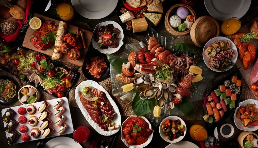When talking about Indian food, people’s first reaction is: food hygiene rating: light, moderate, severe, Indian. The first thing people think about street food in India is technology and hard work, but that’s not all. There is a big gap between rich and poor in India, so there is a big gap between food and drink. Take a look below.We generally assume that the tables of the rich and the poor will be very different, but this is always a vague concept.In India, however, the table hierarchy is very clear, all because of the Indian caste system.
Today we are going to talk about the eating habits of different castes in India.
In India, the caste system has existed for thousands of years. It is a deeply rooted social and cultural idea.
Despite official attempts to promote them, the lower castes, especially dalits, remain marginalised.
In India, food and caste are closely linked.
Brahmins of the highest caste are mostly vegetarians and will not eat meat that is considered impure and inedible.
They believe their purity can only be maintained if they are vegan and eat only those foods prepared by certain classes of people.
If a Brahmin eats meat or violates the dietary laws of his caste, then he must undergo numerous purification rituals.
Second order Kshatriyas (nobles in charge of administration and military) could eat non-vegetarian foods deemed suitable for them.
But these non-vegetarian foods do not include beef.
The upper classes do not eat beef or pork and some offal, so these ingredients go to the untouchables (also known as dalits).
These dalits are not rich and have few food options. Gradually, they have invented some special food of their own.
Rakti, for example, is a dish made from congealed sheep’s blood and fried Onions, usually served with rice or flat bread. Then there is Chanya, which is made from sun-dried pig skin cooked with marinated fat pork and raw sugar.
Dalits cannot afford spices and their main condiments are salt and cayenne pepper.
As mentioned above, Indians (mainly Hindus, but other religions also borrow from them) pay attention not only to what they put in their bodies, but also to who prepares it.
In most cases, if a person accepts cooked food or drinks prepared by a person of a lower caste than himself, then there is a risk of “contamination”.
However, if it is “raw”, such as fresh unpeeled fruits and vegetables, then it does not matter.
The saying is said to come from ancient texts.
It is mentioned in the Manu Code that Brahmins cannot eat cooked food provided by the Shudras (the fourth caste, mostly conquered indigenous people), but can accept raw grain if survival is difficult.
Also, if a Brahmin unwittingly approaches a lower caste woman, eats with her or accepts her gifts, he is stripped of his caste; But if he did it knowingly, he would be relegated to the same rank as those of the lower castes.
Sounds hard to understand, right? The Manu Code also has its own interpretation of this.
It points out the connection between food and human beings. If a person eats another person’s food, then he shares in that person’s sin. Maybe that’s why Indian food is segregated too.
Not only the Code of Manu, but also many Indian scriptures can find some rules and taboos about eating. For example, people should face east when eating, and people of higher castes should not eat in front of people of lower castes.
Ancient Indian mythology depicted Brahmins as the direct children of the main god and therefore more pure than others.
Therefore, Brahmins’ eating habits and rituals are also very exquisite. For example, garlic, leeks, Onions, mushrooms and other foods are not pure, so they are not suitable for Brahmins to eat.
Besides food, water is also caste – specific. Water from clay POTS can only be drunk by people of higher or middle castes, while water from brass POTS can be drunk by people of lower castes.
According to the scriptures, water carriers are not subject to this rule and carry water to families of all castes who will not become impure even if they drink water from lower castes.
But now that there is a running water system, this rule is dispensed with.
In the past, restaurants in big cities served only upper-caste customers, but now they serve some lower-caste customers as well.
But they also have their own stubbornness. There are clear distinctions between food, staff and even customers.
It is said that the cooks in the restaurants are usually Brahmins and the cleaners are generally from the lower castes. However, almost all restaurants do not hire untouchables.
